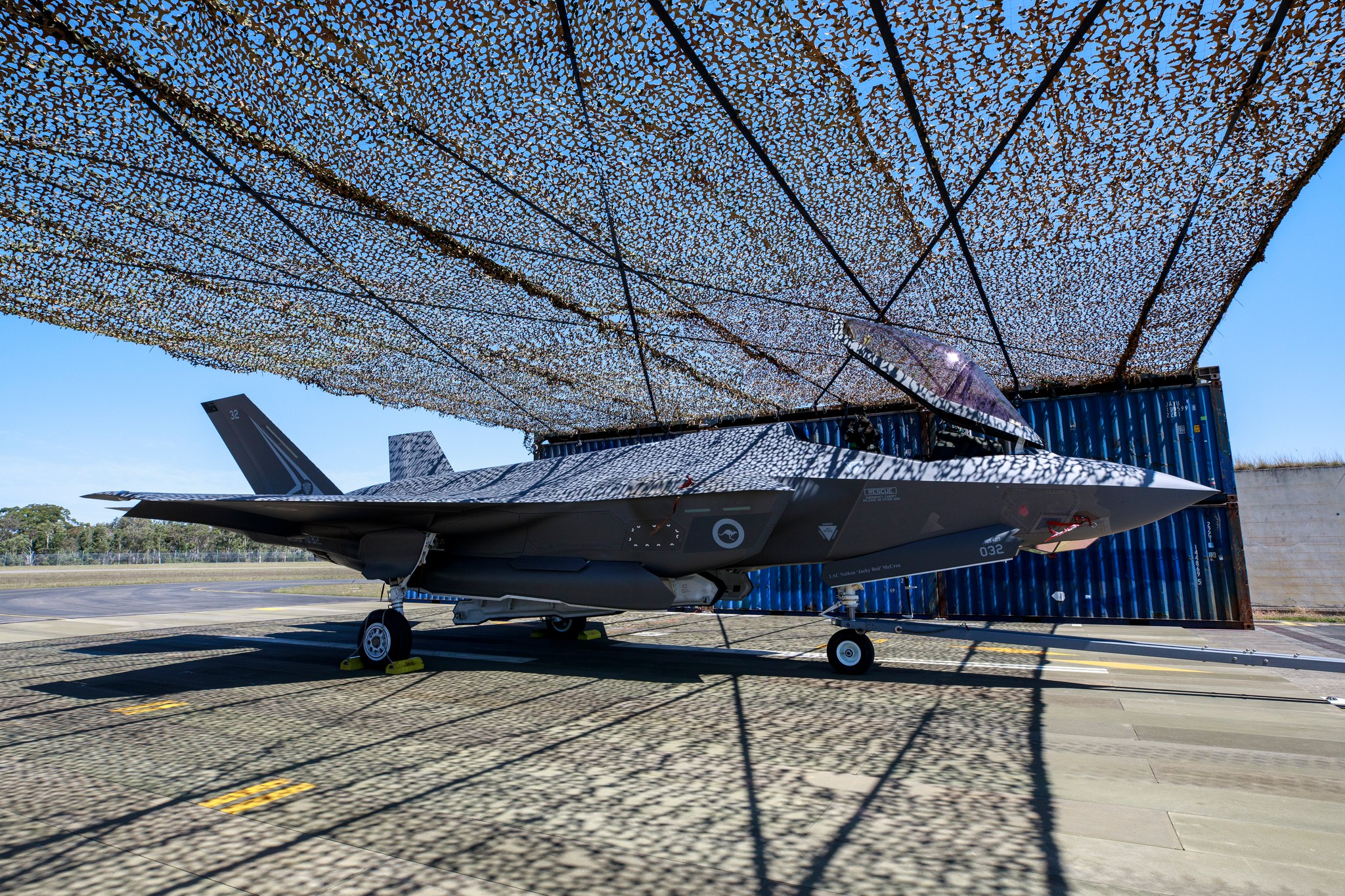
Royal Australian Air Force conducted a trial of a temporary shelter designed to protect and conceal aircraft from explosives and surveillance at Base Williamtown in October.
This trial is part of ongoing efforts to inform the Air Force about future dispersed aircraft revetment solutions that support agile operation concepts, utilizing alternative passive defense methods and materials.
According to the Australian military’s latest press release, Aircraft revetments are essential open-air structures designed to shield parked aircraft from potential threats, including discovery, blast, and fragmentation damage. The ability to construct these structures quickly, cost-effectively, and relocate them to different locations with agility provides a critical additional capability to the Air Force in safeguarding its fast jet assets and confusing potential aggressors.
Group Captain Jason Dean, Director of Logistics Capabilities at ACG, explained the rationale behind the testing and evaluation, stating, “The development and validation of a dispersed ACG aircraft revetment that can be repeated at scale across northern air bases – and other locations – is being very much driven by the Defence Strategic Review. This first iteration will explore and evaluate solutions for taxiway matting, barrier construction, and camouflage and concealment. Subsequent iterations are anticipated to further develop these concepts into an efficient and effective solution for implementation within the wider scope of airbase resilience.”
The construction of the temporary revetment at RAAF Base Williamtown was carried out by personnel from the 65 Air Base Recovery Squadron (65ABRS). This involved a significant amount of hard work and problem-solving to adhere to the timeline, with tasks including the installation of concrete walling, shipping containers, airfield matting, and alternative methods of camouflage and concealment to enable an assessment of effectiveness.
Flight Lieutenant Paulo Cellini led the team responsible for the construction, emphasizing the innovative approach they took, stating, “Our team approached this task as an opportunity to take the skill sets we have and employ them in a new way in support of Air Force innovation. We learned a lot during the construction of the revetment, and 65ABRS will build upon these lessons to support future taskings.”
The role of 65ABRS extends to providing airbase recovery functions in support of contingency response operations. This ensures that if the Air Force has a requirement to use an air base, it can be accomplished with support from 65ABRS, regardless of when or where.
Wing Commander Paul Howell, Commanding Officer of 65ABRS, emphasized the significance of the agile operations concept, stating, “In this case, 65ABRS aviators worked with ACG to develop concepts to help protect fast jets and allow us to continue to project airpower.”
The trial of dispersed aircraft revetments not only represents a crucial step in enhancing the Air Force’s capabilities but also highlights the ever-evolving strategies and technologies employed in the realm of defense and security. As such, this development will be closely monitored by experts and stakeholders in the field.